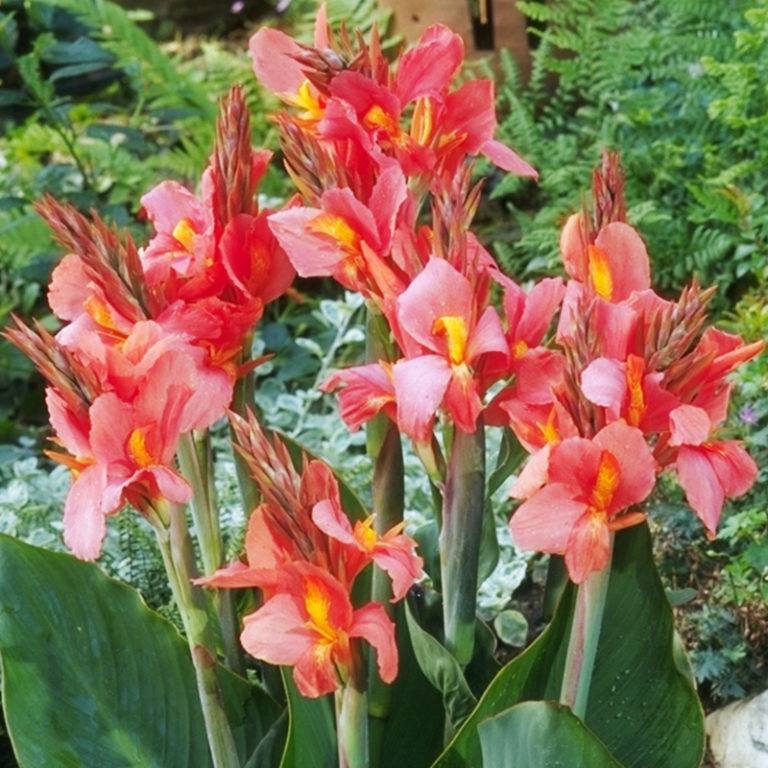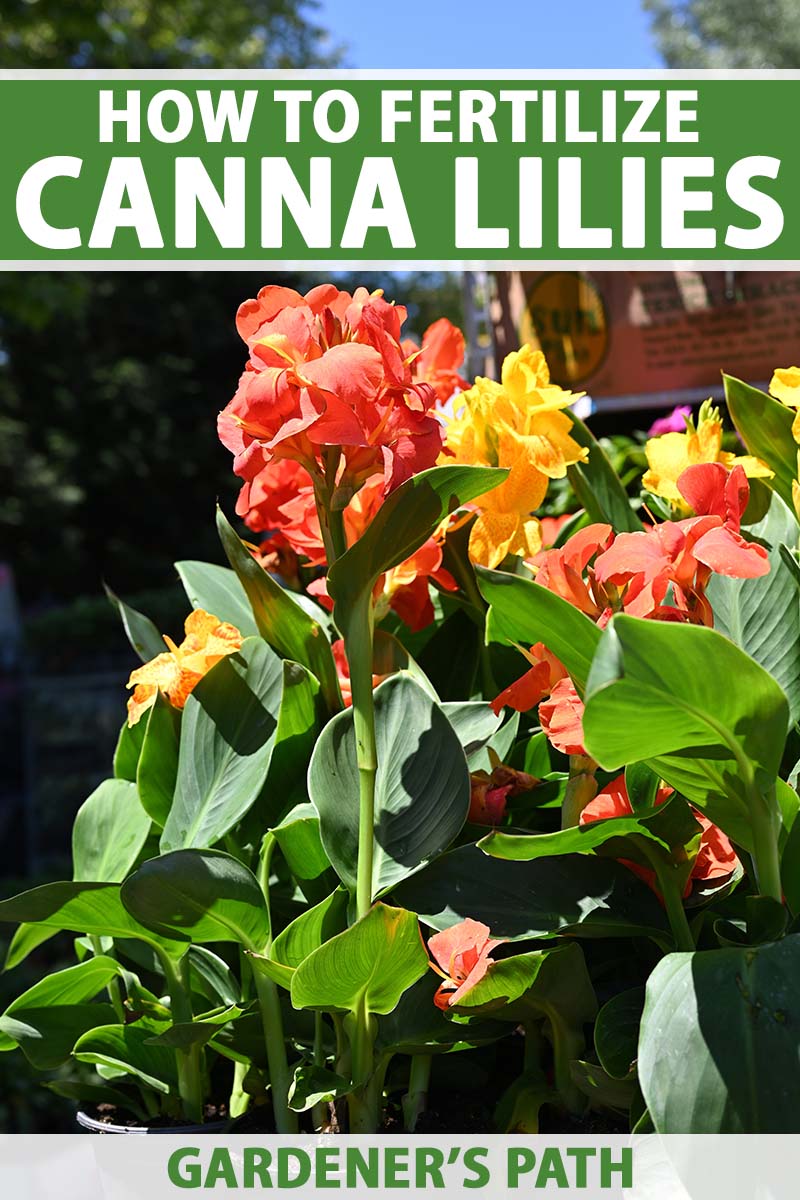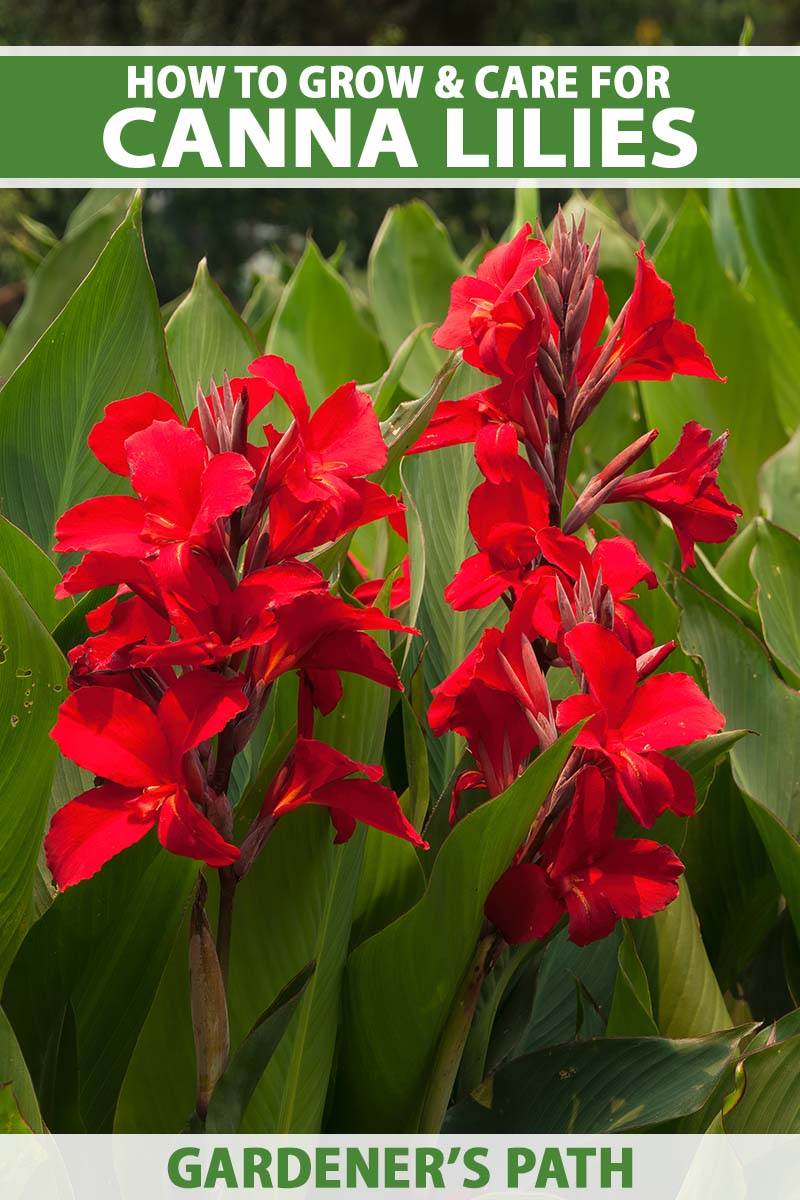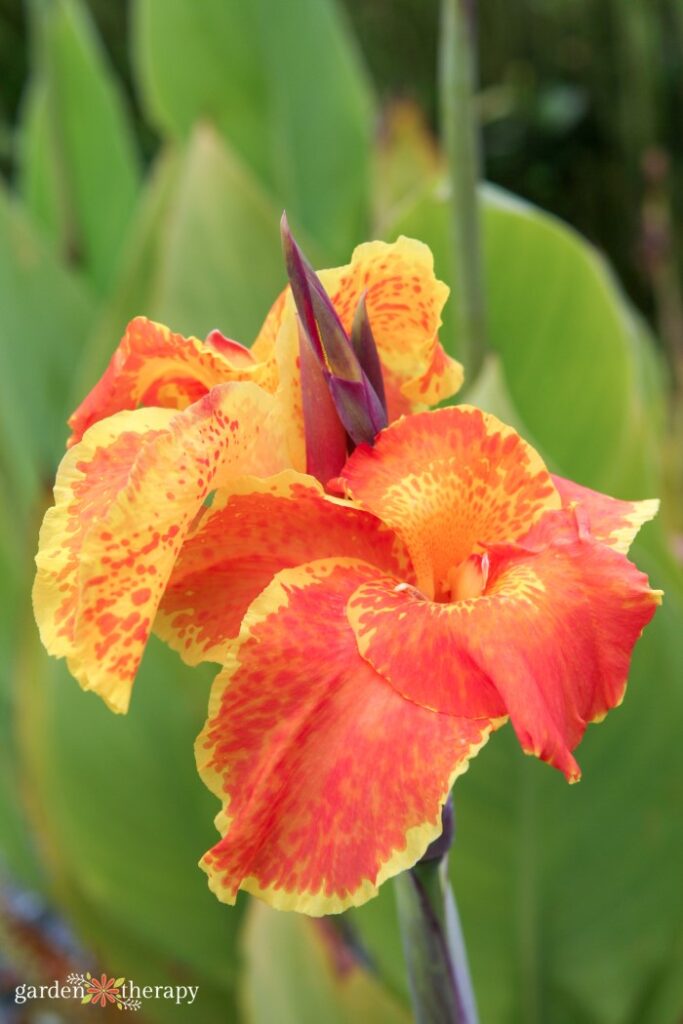Unlocking the Secrets of Canna Lily Care
Canna lilies are a popular choice among gardeners and indoor plant enthusiasts alike, and for good reason. These vibrant flowers are not only stunningly beautiful, but they also attract pollinators and add a touch of tropical elegance to any space. If you’re looking to add some excitement to your garden or indoor space, learning how to grow canna lilies is a great place to start. With their relatively low-maintenance requirements and ability to thrive in a variety of conditions, canna lilies are an excellent choice for gardeners of all skill levels.
In this article, we’ll take a comprehensive look at the ins and outs of canna lily care, covering everything from choosing the right variety to troubleshooting common issues. Whether you’re a seasoned gardener or just starting out, you’ll find valuable insights and practical tips to help you grow and enjoy these stunning flowers.
One of the key benefits of growing canna lilies is their ability to attract pollinators. These flowers are a favorite of hummingbirds, bees, and butterflies, making them an excellent choice for gardeners looking to create a wildlife-friendly garden. Additionally, canna lilies are relatively easy to care for, requiring only minimal maintenance to thrive.
Of course, like any plant, canna lilies do require some special care. In the following sections, we’ll delve into the specifics of canna lily care, covering topics such as soil, sun, and water requirements, as well as tips for fertilizing, pruning, and pest control. By the end of this article, you’ll be well on your way to becoming a canna lily expert, with the knowledge and skills you need to grow these stunning flowers with confidence.
So why not get started on your canna lily journey today? With their vibrant flowers and low-maintenance requirements, these plants are an excellent choice for anyone looking to add some excitement to their garden or indoor space. And with the tips and insights provided in this article, you’ll be well on your way to growing and enjoying these stunning flowers in no time.
Choosing the Right Variety: A Guide to Canna Lily Types
When it comes to growing canna lilies, one of the most important decisions you’ll make is choosing the right variety for your garden or indoor space. With over 50 species of canna lilies to choose from, selecting the right type can be overwhelming. However, by understanding the characteristics of each variety, you can make an informed decision and ensure that your canna lilies thrive.
Canna lilies come in a range of sizes, from dwarf varieties that grow to be around 2-3 feet tall, to medium varieties that reach heights of 4-6 feet, and tall varieties that can grow up to 8 feet or more. Dwarf varieties, such as ‘Tropicanna’ and ‘Pretoria’, are ideal for small gardens or indoor spaces, while medium varieties, such as ‘Canna x generalis’ and ‘Canna ‘Red King”, are well-suited for larger gardens or containers. Tall varieties, such as ‘Canna ‘Musifolia” and ‘Canna ‘Phasion”, make a dramatic statement in the garden and are perfect for creating a tropical look.
In addition to size, canna lily varieties also differ in terms of their flower color, shape, and foliage. Some varieties, such as ‘Canna ‘Yellow King”, have bright yellow flowers, while others, such as ‘Canna ‘Red King”, have deep red flowers. Some varieties also have striking foliage, such as ‘Canna ‘Pretoria”, which has leaves with bright yellow and green stripes.
When selecting a canna lily variety, consider the specific growing conditions of your garden or indoor space. If you have a sunny spot with well-draining soil, a tall variety with bright flowers may be a good choice. If you have a shadier spot with moist soil, a dwarf variety with more subtle flowers may be a better option.
Ultimately, the key to growing successful canna lilies is to choose a variety that is well-suited to your specific growing conditions. By understanding the characteristics of each variety and selecting the right type for your garden or indoor space, you can enjoy the beauty and benefits of these stunning flowers.
Preparing the Perfect Environment: Soil, Sun, and Water
When it comes to growing canna lilies, providing the right environment is crucial for optimal growth and flowering. In this section, we’ll discuss the ideal soil conditions, sunlight requirements, and watering needs for canna lilies.
Soil is one of the most critical factors in growing canna lilies. These plants prefer well-draining soil that is rich in organic matter. A mix of compost, peat moss, and perlite is ideal for canna lilies. Avoid using regular potting soil, as it can be too dense and may cause the roots to rot.
In terms of sunlight, canna lilies require full sun to partial shade. They thrive in temperatures between 65-95°F (18-35°C) and can tolerate some frost. However, prolonged exposure to frost can damage the plant, so it’s essential to protect them during the winter months.
Watering is also crucial for canna lilies. These plants require consistent moisture, especially during the growing season. Water them deeply once or twice a week, depending on the weather conditions. Avoid overwatering, as this can lead to root rot and other problems.
Another essential factor to consider is humidity. Canna lilies thrive in humid environments, typically above 50%. To maintain the right humidity levels, you can place the pot on a tray filled with water and pebbles or use a humidifier.
By providing the right environment, you’ll be able to grow healthy and vibrant canna lilies. Remember to choose a location with the right amount of sunlight, water them consistently, and maintain the ideal humidity levels. With proper care, your canna lilies will thrive and provide you with beautiful blooms all season long.
When learning how to grow canna lilies, it’s essential to understand the specific needs of these plants. By providing the right environment, you’ll be able to enjoy the beauty and benefits of these stunning flowers. Whether you’re a seasoned gardener or just starting out, with the right care and attention, you can grow vibrant canna lilies that will add a touch of tropical elegance to your garden or indoor space.
Planting Canna Lilies: A Step-by-Step Process
Planting canna lilies is a straightforward process that requires some basic preparation and attention to detail. In this section, we’ll walk you through the steps to plant canna lilies, including preparing the soil, planting the rhizomes, and spacing the plants correctly.
Before planting, make sure to choose a location with the right amount of sunlight and soil conditions. Canna lilies prefer well-draining soil that is rich in organic matter. If your soil is heavy clay or sandy, amend it with compost or well-rotted manure to improve its structure.
To plant canna lilies, start by digging a hole that is twice as wide and just as deep as the rhizome. Place the rhizome in the hole, making sure the eyes (small buds on the rhizome) are facing upwards. Cover the rhizome with soil, and water well to settle the soil.
Space canna lilies 12-18 inches apart, depending on the variety. Planting them too close together can lead to overcrowding, which can reduce air circulation and increase the risk of disease.
After planting, water the soil gently but thoroughly. Keep the soil consistently moist during the first few weeks after planting, but avoid overwatering. Canna lilies are susceptible to root rot if the soil is too wet.
As the plants grow, you may need to stake them to prevent them from toppling over in the wind. Use bamboo stakes or other supports to keep the plants upright, and tie them loosely with twine or wire.
By following these steps, you’ll be able to plant canna lilies successfully and enjoy their beautiful blooms all season long. Remember to provide the right environment, including sunlight, water, and nutrients, to help your canna lilies thrive.
Learning how to grow canna lilies requires attention to detail and a willingness to provide the right care. By following the steps outlined in this article, you’ll be well on your way to growing vibrant canna lilies that will add a touch of tropical elegance to your garden or indoor space.
Fertilizing and Pruning: Tips for Optimal Growth
Fertilizing and pruning are two essential steps in growing canna lilies. By providing the right nutrients and pruning the plants correctly, you can encourage optimal growth and flowering.
Canna lilies are heavy feeders and require regular fertilization to produce plenty of blooms. Use a balanced fertilizer that is high in phosphorus, such as 10-20-10, to promote blooming. You can also use a fertilizer that is specifically formulated for flowering plants, such as a bloom booster.
Apply the fertilizer once a month, following the instructions on the label. You can also add a handful of compost or well-rotted manure to the soil to provide additional nutrients.
Pruning is also essential for canna lilies. Remove any dead or damaged leaves or flowers to prevent the spread of disease and encourage new growth. Cut back the flower stalks to the base of the plant after they finish blooming to encourage new blooms to form.
Prune the plants in the spring, removing any dead or damaged leaves or stems. This will help to promote new growth and encourage the plants to produce plenty of blooms.
By fertilizing and pruning your canna lilies correctly, you can encourage optimal growth and flowering. Remember to provide the right nutrients and prune the plants correctly to get the most out of your canna lilies.
Learning how to grow canna lilies requires attention to detail and a willingness to provide the right care. By following the steps outlined in this article, you’ll be well on your way to growing vibrant canna lilies that will add a touch of tropical elegance to your garden or indoor space.
When it comes to fertilizing and pruning canna lilies, it’s essential to remember that these plants are sensitive to over-fertilization and over-pruning. Avoid using too much fertilizer or pruning too much of the plant, as this can cause damage and reduce blooming.
Pest and Disease Control: Common Issues and Solutions
Canna lilies are generally hardy plants, but they can be susceptible to pests and diseases. In this section, we’ll discuss some common issues that can affect canna lilies and provide tips on how to prevent and treat them.
Aphids are one of the most common pests that can affect canna lilies. These small, soft-bodied insects can cause curled or distorted leaves and can spread plant viruses. To control aphids, use neem oil or insecticidal soap, and make sure to spray the undersides of the leaves where aphids tend to congregate.
Whiteflies are another common pest that can affect canna lilies. These tiny insects can cause yellowing or stunted leaves and can spread diseases. To control whiteflies, use yellow sticky traps or insecticidal soap, and make sure to spray the undersides of the leaves where whiteflies tend to congregate.
Fungal infections are also a common problem for canna lilies. These infections can cause yellowing or blackening of the leaves and can spread quickly if left untreated. To prevent fungal infections, make sure to water canna lilies carefully, avoiding overhead watering and instead using soaker hoses or watering cans. If a fungal infection does occur, treat it with a fungicide and remove any infected leaves or stems.
Root rot is another common problem for canna lilies. This can occur when the soil is too wet or when the plants are not receiving enough air circulation. To prevent root rot, make sure to plant canna lilies in well-draining soil and avoid overwatering. If root rot does occur, treat it by removing any infected roots and repotting the plant in fresh, well-draining soil.
By being aware of these common pests and diseases, you can take steps to prevent them and keep your canna lilies healthy and thriving. Remember to monitor your plants regularly and take action quickly if you notice any problems.
Learning how to grow canna lilies requires attention to detail and a willingness to provide the right care. By following the steps outlined in this article, you’ll be well on your way to growing vibrant canna lilies that will add a touch of tropical elegance to your garden or indoor space.
Overwintering Canna Lilies: A Guide to Protecting Your Plants
Canna lilies are sensitive to frost and freezing temperatures, so it’s essential to protect them during the winter months. In this section, we’ll discuss how to overwinter canna lilies, including digging and storing the rhizomes.
The first step in overwintering canna lilies is to dig up the rhizomes after the first frost. Use a fork to carefully loosen the soil around the rhizome, then lift it out of the ground. Cut back the foliage to about 6 inches from the ground to help prevent moisture from entering the rhizome.
Next, clean the rhizome gently with a soft brush to remove any dirt or debris. This will help prevent rot and disease from developing during the winter months.
Once the rhizome is clean, store it in a cool, dry place such as a basement or garage. You can store the rhizome in a paper bag or a breathable container, making sure to keep it away from direct sunlight and heat.
Check on the rhizome periodically during the winter months to make sure it’s not drying out. If the rhizome starts to dry out, you can mist it with water to keep it moist.
In the spring, when the weather starts to warm up, you can replant the rhizome in the garden. Make sure to choose a location with full sun and well-draining soil, and follow the same planting instructions as before.
By following these steps, you can successfully overwinter your canna lilies and enjoy their beautiful blooms again in the spring. Remember to be patient and gentle when handling the rhizomes, as they can be delicate and easily damaged.
Learning how to grow canna lilies requires attention to detail and a willingness to provide the right care. By following the steps outlined in this article, you’ll be well on your way to growing vibrant canna lilies that will add a touch of tropical elegance to your garden or indoor space.
Common Mistakes to Avoid: Troubleshooting Canna Lily Care
While canna lilies are relatively easy to care for, there are some common mistakes to avoid in order to ensure optimal growth and flowering. In this section, we’ll discuss some of the most common mistakes to avoid when growing canna lilies, as well as provide troubleshooting tips for common issues that may arise.
One of the most common mistakes to avoid when growing canna lilies is overwatering. Canna lilies prefer well-draining soil and can be susceptible to root rot if the soil is too wet. To avoid overwatering, make sure to check the soil moisture regularly and only water when the soil feels dry to the touch.
Another common mistake to avoid is underwatering. While canna lilies prefer well-draining soil, they still need consistent moisture to thrive. To avoid underwatering, make sure to water your canna lilies regularly, especially during hot and dry weather.
Inadequate sunlight is another common mistake to avoid when growing canna lilies. Canna lilies prefer full sun to partial shade, so make sure to choose a location that receives at least 4-6 hours of direct sunlight per day.
If you notice that your canna lilies are not blooming, it may be due to a lack of fertilization. Canna lilies are heavy feeders and require regular fertilization to produce plenty of blooms. To encourage blooming, use a balanced fertilizer that is high in phosphorus, such as 10-20-10.
Finally, if you notice that your canna lilies are developing yellow or brown leaves, it may be due to a fungal infection. To treat fungal infections, use a fungicide and remove any infected leaves or stems.
By avoiding these common mistakes and troubleshooting common issues, you can ensure optimal growth and flowering of your canna lilies. Remember to be patient and observant, and don’t hesitate to seek advice from a gardening expert if you’re unsure about how to care for your canna lilies.
Learning how to grow canna lilies requires attention to detail and a willingness to provide the right care. By following the steps outlined in this article, you’ll be well on your way to growing vibrant canna lilies that will add a touch of tropical elegance to your garden or indoor space.


:max_bytes(150000):strip_icc()/growing-canna-lilies-in-containers-847913-03-06ae3c6920b342c78abd5d2791923f17.jpg)
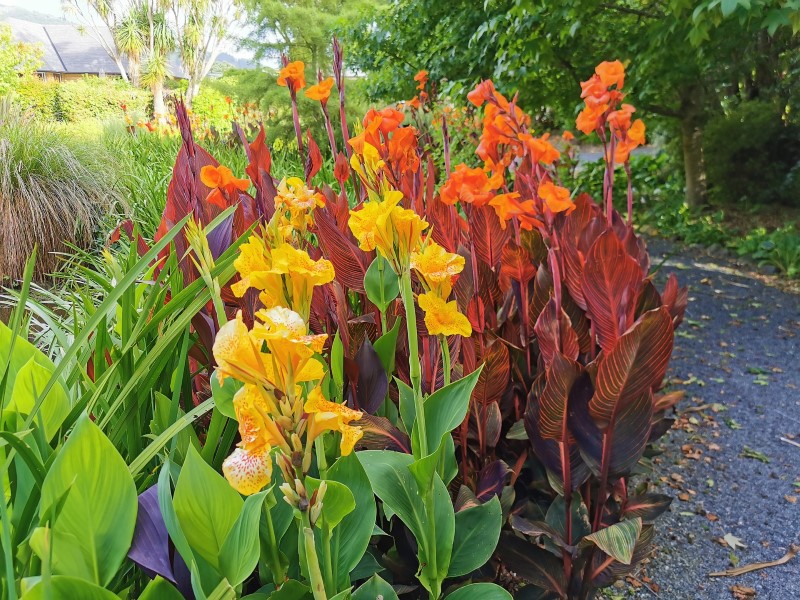
:max_bytes(150000):strip_icc()/growing-cannas-1402837-16-3b03def365e049ab84cc4f534fc00d98.jpg)
